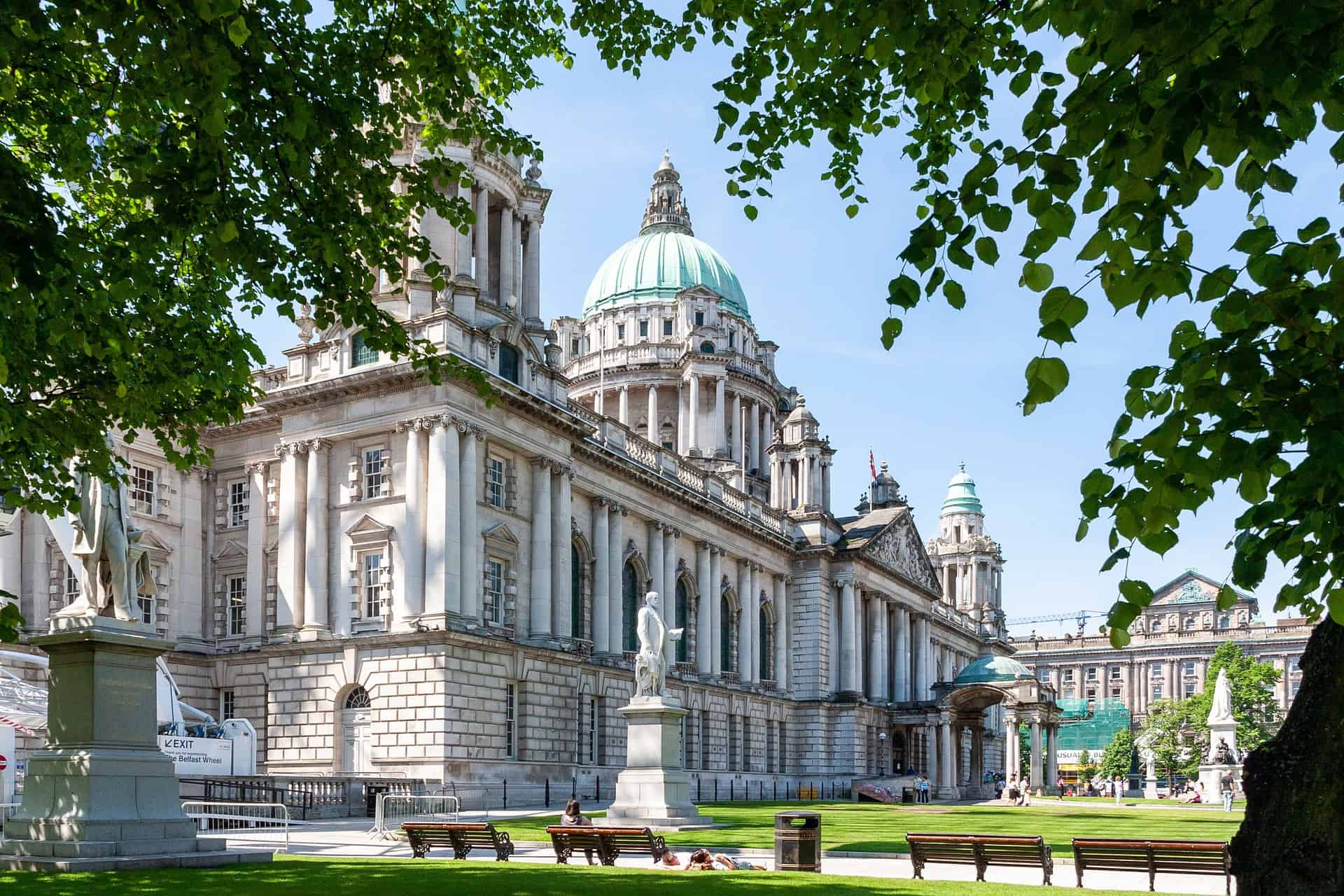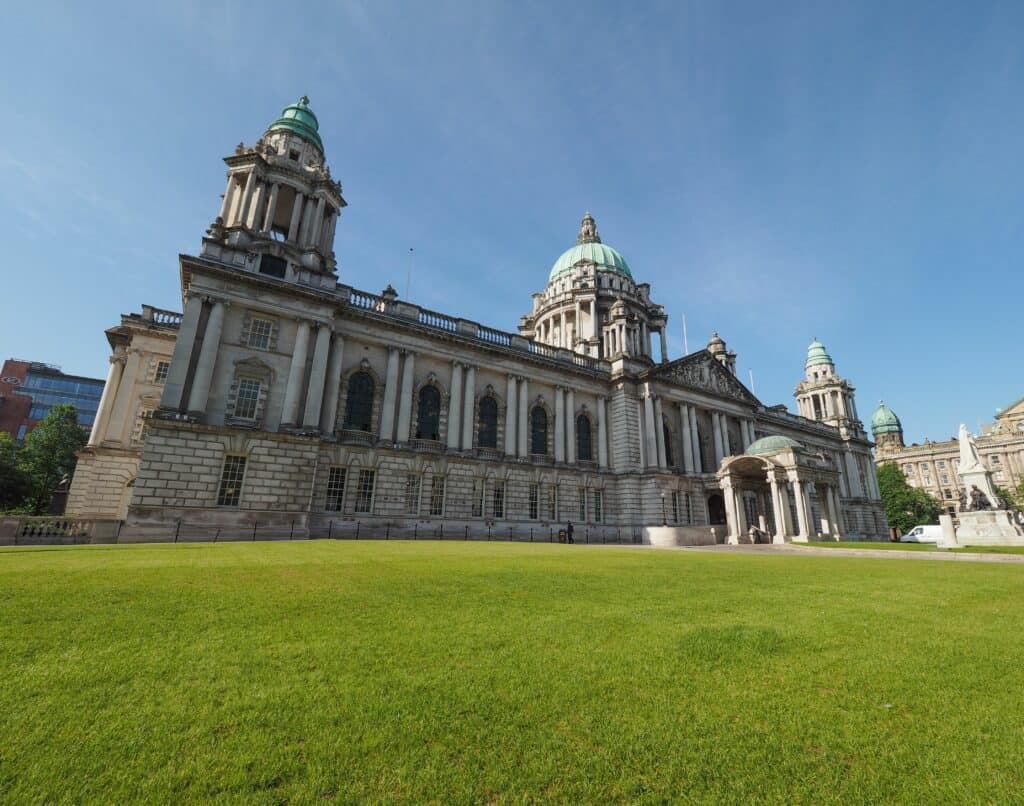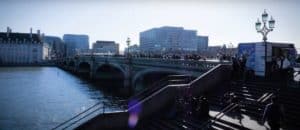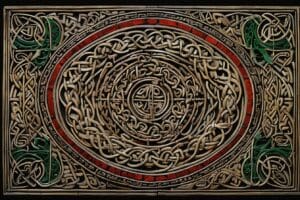A Walk Around The Amazing City of Belfast

Updated On: April 16, 2024 by Noha Nabil
For all those who are coming to the city of Belfast soon and still have not made any plans for the places they have to visit, then this video below is for you because we have brought those hot spots of Belfast city, Northern Ireland, and the things to do and the places to visit to try and help a little bit.
Crown Bar
The Crown Bar can be found on Great Victoria Street in the city. It is one of the original bars in Belfast. It was refurbished in 1885 and is one of Northern Ireland’s best-known pubs.
The pub was opened by Felix O’Hanlon and named The Railway Tavern. Later on, it was bought by Michael Flanagan, whose son, Patrick, renamed and renovated it in 1885.
Italian artisans are credited with designing and executing The Crown’s elaborate tiling, stained glass and woodwork. This craftsmanship gave The Crown the reputation of being one of the finest Victorian Gin Palaces of its time.
The pub’s exterior is decorated with iridescent tiles, including a mosaic of a Crown on the floor of the entrance. The interior is also decorated with mosaic tiles. The red granite-topped bar is of an altar style, with a heated footrest underneath and is lit by gas lamps on the highly decorative carved ceilings. The pub’s stained glass windows feature painted shells, fairies, pineapples, fleurs-de-lis and clowns.
In 1978, the National Trust purchased the property and three years later completed a £400,000 renovation to restore the bar to its original Victorian state. Further restoration by the National Trust was done in 2007 for £500,000. This work is the subject of a BBC Northern Ireland documentary, The Crown Jewel, screened in 2008.
A recognisable landmark of Belfast, the pub has featured as a location in numerous films and television productions, such as David Caffrey’s Divorcing Jack (1998) and Carol Reed’s classic 1947 film Odd Man Out.
Grand Opera House
If you’re looking for entertainment during the evening, then the Grand Opera House in Belfast is the place to be. Book ahead to see your favourite shows and enjoy your night.
Inaugurated in 1895, the Grand Opera House is a theatre that was designed by the most prolific theatre architect of the period, Frank Matcham.
The building hosts musical, dramatic and comedy performances and educational events for over 1,600 audience members.
Belfast City Hall

Until 1613, Belfast was considered to be a small settlement. A royal charter gave Belfast its town status, after which it expanded rapidly, becoming an important port and manufacturing centre. By the second half of the 19th century, Belfast had become a major industrial powerhouse known for its numerous industries, including shipbuilding, rope-making, engineering, tobacco, and textiles. In 1888, Queen Victoria gave Belfast the title of city; hence, a new city hall was needed to reflect this change in status.
Local firm H+J Martin built the new hall following a design by Alfred Brumwell Thomas, who won a public competition with his classical Renaissance design.
The Belfast City Hall was inaugurated on 1 August 1906. The building now stands as a testament to Belfast’s remarkable economic success.
Floodlights have been added to City Hall to light up the building in different colours for special occasions. The lights were installed using the same technology employed at the Empire State Building in New York.
The exterior of the building is made up of Portland stone and is designed in the Baroque Revival style. The building features towers at each of the four corners, with a copper dome in the centre.
The statue of Queen Victoria by Sir Thomas Brock can be found within the City Hall grounds, as well as a granite column commemorating the American Expeditionary Force, who were based in Belfast before D-Day.
The grounds also contain a memorial dedicated to Sir Edward Harland, the former head of the Harland and Wolff shipyard, which was sculpted by Thomas Brock, in addition to Northern Ireland’s prominent war memorial, The Garden of Remembrance and Cenotaph. Other memorials located within the grounds include those dedicated to James Magennis VC, the only Northern Irish recipient of the Victoria Cross during World War II; Belfast footballer George Best; and the Imjin River Memorial, which commemorates Irish troops who perished in the Battle of Chaegunghyon in during the Korean War.
The interior of the building has several notable features, including the Porte-Cochère, Grand Entrance, and Grand Staircase. The Great Hall was destroyed during the Belfast Blitz and rebuilt again.
The building also features Carrara, Pavonazzo and Brescia marble and stained glass windows with the Belfast Coat of Arms, portraits of Queen Victoria and William III and shields of the Provinces of Ireland.
Various memorials are in the building honouring Frederick Robert Chichester, Earl of Belfast, Sir Crawford and Lady McCullagh and the 36th (Ulster) Division.
- Titanic Memorial Garden
Many might find it surprising, but the Belf.
City Hall has a deep connection with the Titanic. It is said that Lord Pirrie, a leading Irish shipbuilder and businessman who oversaw the design of the Titanic, contributed many ideas to the design of the Belfast City Hall.
‘William Pirrie, Lord Mayor in 1896-1897, refers to the hall as the stone Titanic’. He was supposed to take the trip on board the ship but was prevented by an unexpected illness. Before the ill-fated voyage in 1912, Pirrie was questioned about the lifeboats aboard the vessel and why their numbers were insufficient to accommodate the travellers in an emergency. He responded that the great ship was unsinkable and the rafts were to save others.’William Pirrie, Lord Mayor in 1896-1897, refers to the hall as ‘the stone Titanic’. He was supposed to take the trip on board the ship but was prevented by an unexpected illness. Before the ill-fated voyage in 1912, Pirrie was questioned about the lifeboats aboard the vessel and why their numbers were insufficient to accommodate the travellers in an emergency. He responded that the great ship was unsinkable and the rafts were to save others.
The Titanic Memorial, sculpted by Sir Thomas Brock, which pays tribute to 22 men who lost their lives on the ship, can be found on the grounds of the Belfast City Hall. Another statue by Brock depicts Sir Edward Harland, who was Lord Mayor in 1885 and 1886, with the ship’s plan in hand.
The Lord Mayor’s Suite is also named the Titanic Rooms, as some of the craftsmen who worked on them went on to work on the famous ship. Portraits of Lord and Lady Pirrie also hang in the Reception Room.’The Lord Mayor’s Suite is also named ‘the Titanic Rooms’, as some of the craftsmen who worked on them went on to work on the famous ship. Portraits of Lord and Lady Pirrie also hang in the Reception Room.
‘The Titanic Memorial Garden can be found on the east side of Belfast City Hall. The garden was built around the Titanic monument. The garden is set on two levels, with the upper level containing a nine-meter-long platform that supports 15 bronze plaques that list the names of the 1,512 people who tragically lost their lives on the RMS Titanic. This is the first time that the names of everyone who perished have been recorded on one monument, now known as the Belfast List’.’The Titanic Memorial Garden can be found on the east side of Belfast City Hall. The garden was built around the Titanic monument. The garden is set on two levels, with the upper level containing a nine-meter-long platform that supports 15 bronze plaques that list the names of the 1,512 people who tragically lost their lives on the RMS Titanic. This is the first time that the names of everyone who perished have been recorded on one monument, now known as ‘The Belfast List’.
- City of Belfast Tours
Experienced guides lead free public tours of the Belfast City Hall. Visitors simply sign in at the Main Reception shortly before the tour. The guided tour lasts 45 minutes, where visitors can enjoy the building’s finest features and see various rooms, including The Great Hall, Banqueting Hall, Reception Hall, Council Chamber, and Robing Room.
Royal Avenue and Victoria Square Shopping Centre
With Christmas getting closer and closer each day, it’s about time we all get our last-minute shopping done and what better place to do so than Royal Avenue in Belfast?
One of Belfast’s most well-known locations is Royal Avenue in the Cathedral Quarter in the heart of Belfast, which has been the city’s main shopping thoroughfare since its establishment in the late 19th century.
It is home to the shopping complex Westfield CastleCourt. It begins from the Donegall Place junction with Castle Place and Castle Street, which is the hub of the city centre, runs north to the North Street crossing, and angles northeast to the Donegall Street intersection, continuing in a northeasterly direction as York Street.
Royal Avenue has many Victorian and Edwardian buildings, including the Central Library and the Haymarket Building, alongside the modern shopping complexes.
Royal Avenue was established in 1881. Since then, it has become Belfast’s principal shopping thoroughfare, and today, it is lined with major department stores and big brand shops.
Royal Avenue houses many shops and major department stores that attract numerous shoppers daily. This includes branches of big brands, such as Primark, Tesco, H&M, and Schuh.
‘Victoria Square is another shopping centre with over 70 international and local brands, restaurants and a cinema. You can find the’‘Dome’, which offers panoramic views of the city, the River Lagan and the Mourne Mountains.’Victoria Square is another shopping centre with over 70 international and local brands, restaurants and a cinema. You can find the ‘Dome’, which offers panoramic views of the city, the River Lagan and the Mourne Mountains.
CastleCourt in the City of Belfast
Castle Court is another indoor shopping centre that’s worth checking out. It is located on Royal Avenue and is the third biggest shopping centre in Northern Ireland.
It offers a fantastic selection of high-street shops, including clothing, jewellery, and toy shops, and a range of food and drink outlets.
The Cathedral Quarter: A Cultural Hub
Taking its name from St. Anne’s Cathedral, the Cathedral Quarter is home to a bustling culture and arts scene, cosy pubs, underground music venues and contemporary restaurants.
The area has recently re-emerged as a ‘cultural quarter’ of the city because of the recent growth in arts and culture-based organisations that are located there, including Northern Visions TV, The Safehouse Arts Gallery, Belfast City Print Workshop and Belfast’s small Zen Meditation community.
The area also boasts a rich literary heritage as The Northern Whig, a popular newspaper circulated from 1824 until 1963, was based there. Today, its building has been transformed into a popular pub and restaurant. The Irish News, another well-known newspaper, still has its head office on Donegall Street.
Another well-known pub in the area is named after City of Belfast poet John Hewitt. The pub showcases noteworthy artwork and photographs for sale.
St. Anne’s Cathedral
St. Anne’s is a neo-Romanesque building built in 1899 on the site of Belfast’s first Church of Ireland Episcopal parish. Sir Thomas Drew designed the cathedral, and the Countess of Shaftesbury laid the foundation stone on 6 September 1899. It was initially constructed around the old parish church of St Anne until 31 December 1903, when the old church was demolished.
In 1925, the cathedral’s west front was built as a memorial to commemorate the Ulstermen and women who served and died in WWI.
Albert Clock
‘Known asBelfast’ss’‘Leaning Tower of Pis’’, the Albert Memorial Clock was erected in 1853 as a memorial to Prince Albert, the consort of Queen Victoria. The 14-foot tower has made it into pop culture as well. It can be seen in the 1947 film ‘ Odd Man Out’ starring James Mason. Although access to the interior is known as Belfast’s ‘Leaning Tower of Pisa’, the Albert Memorial Clock was erected in 1853 as a memorial to Prince Albert, the consort of Queen Victoria. The 14-foot tower has made it into pop culture as well. It can be seen in the 1947 film ‘Odd Man Out’ starring James Mason. Although access to the interior
Titanic Quarter
Within walking distance of the Cathedral Quarter is the Titanic Quarter. The historic landmarks include film studios, education facilities, apartments, and an entertainment district. The Titanic-themed attraction is an 185-acre site where the famous RMS Titanic was constructed a century ago.
Named the World’s Leading Tourist Attraction 2016, the Titanic Quarter offers several tour options for the public that include a variety of attractions within the quarter.
You can see the Titanic Dock and Pump-House where the famous Titanic Liner was built. You also have the opportunity to see the Titanic at the docks via audio and visual presentations that include rare footage of the ship at the pier in 1912.
The slipways where the RMS Titanic and her sister ship, the Olympic, first slid into the water. The area has now become a plaza where crowds gather for major concerts.
Visitors also pay a visit to the SS Nomadic, the ship that transported first-class and second-class passengers to the Titanic and discover its exciting stories. You can also step onboard the HMS Caroline to explore the ship that survived WWI and even eat on board.
The Odyssey Pavilion in the Titanic Quarter is a great place to relax and have a great meal with family and friends. It offers a variety of restaurants, bars, a cinema and a bowling alley. You can see the SSE Arena, where concerts or ice hockey games are held there.
Finally, try the wakeboard park by the slipway if you’re in for an adventure. Take a shot at cable wakeboarding, similar to water skiing, but you’re pulled by an electric cable instead of a boat. It’s an exhilarating experience that should not be missed!
“Aside from the Pump House, you can visit the Titanic Museum to learn more about the ship’s history. It is also reported that when James Cameron, director of the famous Academy Award-winning 1997 Titanic film, visited the museum, he stated, “It’s quite phenomenal. It is a magnificent, dramatic building, the biggest Titanic exhibition in the world.”Aside from the Pump House, you can visit the Titanic Museum to learn more about the ship’s history. It is also reported that when James Cameron, director of the famous Academy Award-winning 1997 Titanic film, visited the museum, he stated, “It’s quite phenomenal. It’s a magnificent, dramatic building, the biggest Titanic exhibition in the world.”
Ulster Hall
The Ulster Hall is a concert hall located on Bedford Street in Belfast. It hosts concerts, classical recitals, craft fairs and political party conferences.
Opened in 1862, the hall was designed by William J. Barre, the designer of the Albert Clock. It was used as a dance hall during WWII to entertain American troops stationed in Northern Ireland.
Throughout its history, Ulster Hall has hosted numerous major events and performances, from readings by Charles Dickens to performances by AC/DC, Metallica, Muse, and Westlife’s lead vocalist Shane Filan, among others.
Tourist Information Centre (Visit Belfast)
If you’re visiting the city of Belfast for the first time and are unsure where to start your trip, visit the Tourist Information Center (Visit Belfast) on 9 Donegall Square North. They can provide you with any information or guidance you need. Their services include tickets for tours and events, accommodation bookings, a gift shop, free Wi-Fi, and any information and advice you may need.
Peace Walls
“The Belfast City Peace Walls were built in 1969 following the Northern Ireland riots and”the Troubles” outbreak. The Belfast City Peace Walls range from a few hundred yards to over three miles. They may be made of iron, brick, and steel and are up to 25 feet high. Some walls have gates allowing passage during daylight hours, but they remain closed at night.”The Belfast City Peace Walls were built in 1969 following the outbreak of the Northern Ireland riots and “the Troubles”. The Belfast City Peace Walls range from a few hundred yards to over three miles. They may be made of iron, brick, and steel and are up to 25 feet high. Some walls have gates allowing passage during daylight hours, but they remain closed at night.
According to the Huffington Post, the Peace Walls are listed as one of the city of Belfast’s top tourist attractions. Visitors enjoying bus or cab tours can stop by and are even encouraged to scrawl their messages on it.
If you’re interested in exploring more locations to visit in the city of Belfast: Belfast Castle | Ulster Museum | Redburn Country Park | Belfast Spring Continental Market | Streamvale Open Farm | Woodvale Park | Botanic Gardens






